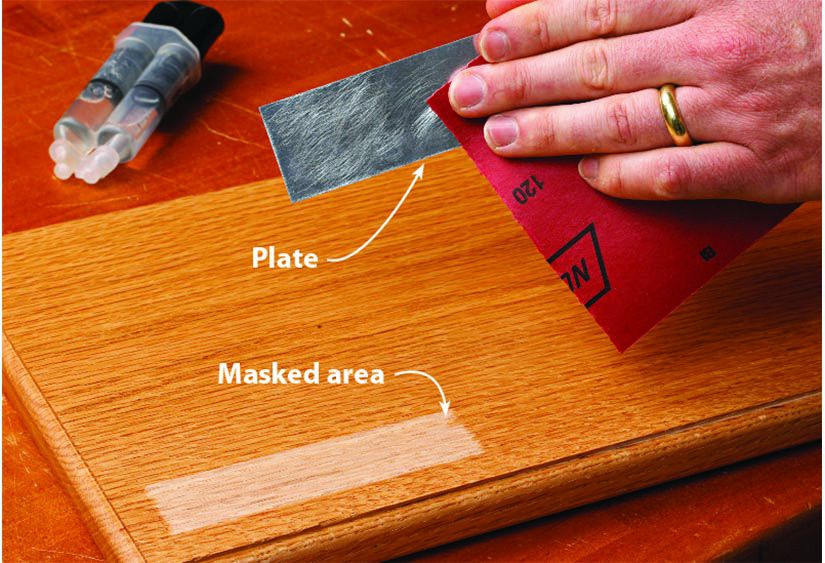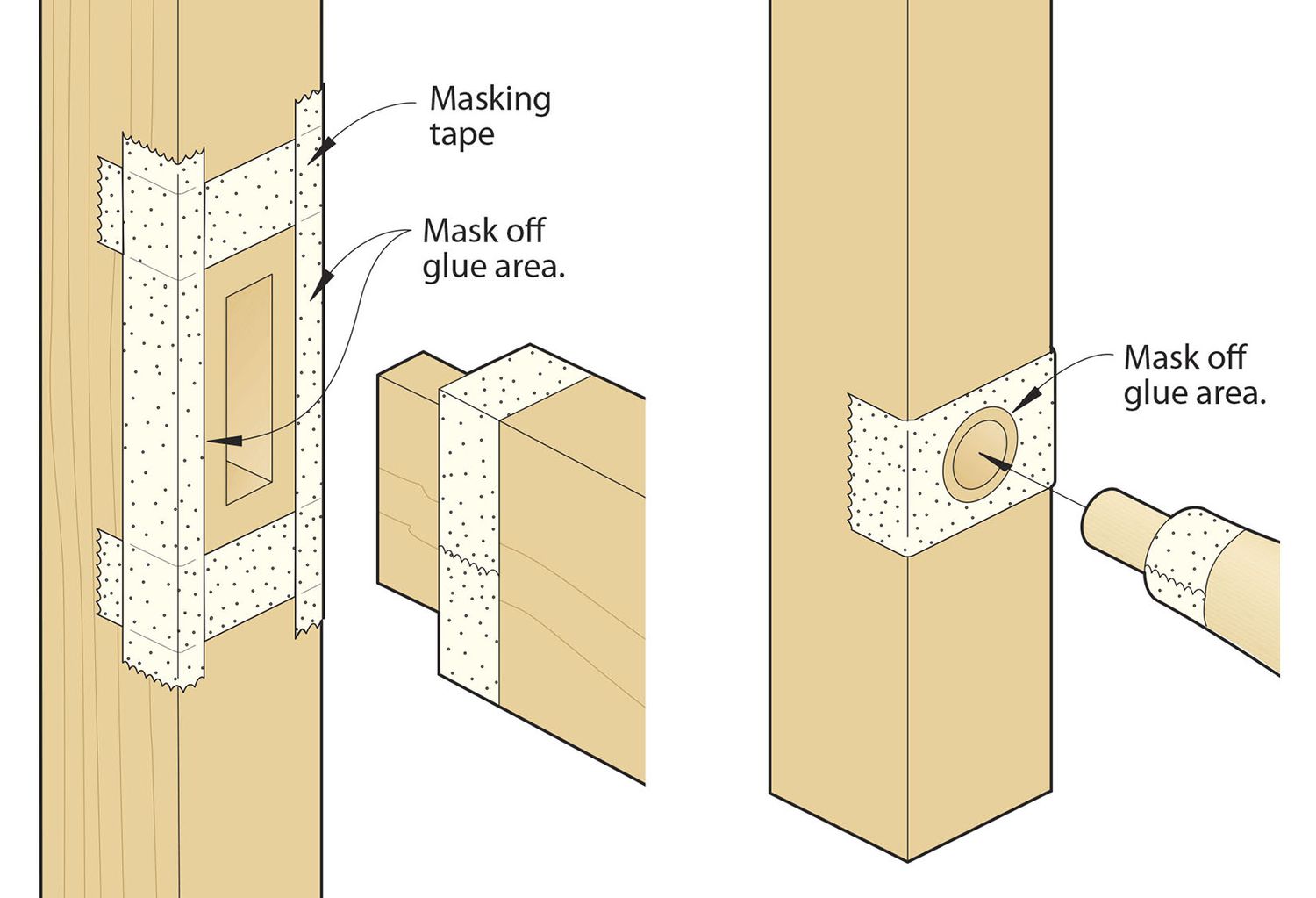Does wood glue stick to metal? If you’ve ever wondered about this, you’re in the right place! 🤔 In this article, we’ll explore the fascinating world of adhesive materials and their surprising capabilities. So, whether you’re a DIY enthusiast or just curious, let’s dive in and find out if wood glue and metal have what it takes to bond together.
Imagine this: you have a project that involves bonding different materials, like wood and metal. You might be tempted to reach for your trusty wood glue, but does it really work on metal surfaces? 🤔 Well, the answer might surprise you! While wood glue is specially formulated for bonding wood fibers, it might not be the best choice for metal-to-metal connections. But don’t worry, there are other adhesives out there that can do the job.
You see, metal surfaces often require a stronger and more specialized adhesive, such as epoxy or metal glue. These adhesives are designed to create a durable bond between metal surfaces, ensuring that your projects stay intact. So, next time you’re working on a project involving metal, remember to reach for the right adhesive to get the job done. Let’s explore the fascinating realm of metal adhesives together! 😊

Does Wood Glue Stick to Metal?
Wood glue is a popular adhesive commonly used for joining wooden materials together. But what if you need to bond wood and metal? Can wood glue be used for this purpose? In this article, we will explore whether wood glue sticks to metal, the reasons behind its effectiveness or lack thereof, and alternative options for bonding wood and metal.
1. The Science Behind Wood Glue and Metal Bonding
The main ingredient in wood glue is polyvinyl acetate (PVA), which forms a strong bond when it dries. However, PVA is primarily designed to work on porous surfaces like wood, where it can penetrate and create a tight bond. Metal, on the other hand, is non-porous and typically lacks the necessary surface texture to allow the glue to adhere effectively.
While some wood glues may claim to bond with metal, the general consensus among professionals is that wood glue is not suitable for reliable metal bonding. Without the ability to penetrate the metal surface, the bond created by wood glue may be weak and prone to failure under stress.
Therefore, if you require a strong and durable bond between wood and metal, it is advisable to explore alternative adhesive options specifically designed for this purpose, such as epoxy or specialized metal bonding adhesives.
2. Alternative Adhesive Options for Wood and Metal Bonding
When it comes to bonding wood and metal, there are several alternative adhesive options that offer superior results compared to wood glue:
- Epoxy: Epoxy is a popular choice for bonding wood and metal. It consists of two components that need to be mixed before application, providing a strong and reliable bond. Epoxy can adhere to a variety of surfaces, including metal, and offers excellent resistance to heat, moisture, and chemicals.
- Specialized Metal Bonding Adhesives: There are specific adhesives available in the market that are specifically formulated to bond metal surfaces. These adhesives often come in different forms, such as liquid, paste, or film, and are designed to create a durable bond that can withstand various stresses and environmental conditions.
- Mechanical Fasteners: In addition to adhesive options, using mechanical fasteners like screws, nails, or bolts can provide a robust and reliable connection between wood and metal. This method is often used in construction or woodworking projects where extra strength is required.
3. Tips for Successful Wood and Metal Bonding
When attempting to bond wood and metal together, there are a few tips that can help ensure a successful and durable bond:
- Clean and Prepare the Surfaces: Both the wood and metal surfaces should be clean, dry, and free from any contaminants or debris. This step helps promote better adhesion and enhances the overall bond.
- Apply the Adhesive Correctly: Follow the instructions provided by the adhesive manufacturer carefully. Use the recommended amount and apply it evenly and in the right manner to achieve optimal bonding results.
- Allow Sufficient Curing Time: Different adhesives require varying amounts of time to cure and develop maximum strength. Make sure to allow the recommended curing time before subjecting the bond to any stress or load.
- Consider Surface Preparation Techniques: If the metal surface is smooth and non-porous, you can improve adhesion by roughening it using sandpaper, wire brushing, or etching. This helps create a better bonding surface for the adhesive.
Benefits of Using Wood Glue with Wood Materials
While wood glue may not be suitable for bonding wood and metal, it offers several benefits when used for joining wood materials:
1. Strong and Durable Bond:
Wood glue creates a strong and durable bond between wood surfaces, making it an ideal adhesive choice for furniture construction, cabinetry, and other woodworking projects. When applied correctly, it forms a bond that can withstand various stresses and pressures.
2. Versatility:
Wood glue is compatible with different types of wood, including softwood and hardwood. It can be used for bonding solid wood, plywood, particleboard, and other wood-based materials. This versatility makes it a reliable adhesive for a wide range of woodworking applications.
3. Ease of Use:
Wood glue is easy to use, as it typically comes in a ready-to-use liquid form. It can be applied directly from the bottle or with the help of a brush or applicator. Its relatively long open time allows for adjustments and proper alignment before the glue dries.
4. Cost-Effective:
Compared to other specialized adhesives, wood glue is generally more affordable. It offers excellent value for money, making it a cost-effective choice for both professionals and hobbyists working on woodworking projects.
Conclusion
While wood glue is not suitable for reliable bonding between wood and metal, it remains an excellent choice for joining wood materials together. When it comes to bonding wood and metal, it is important to explore alternative adhesive options like epoxy or specialized metal bonding adhesives, or consider mechanical fasteners for a strong and durable connection. By choosing the right adhesive and following proper bonding techniques, you can achieve successful results in your wood and metal bonding projects.
Can Wood Glue Stick to Metal?
Yes, wood glue can stick to metal surfaces.
However, it may not be as strong and durable as when used on wood.
For better adhesion, it is recommended to roughen the metal surface and clean it thoroughly before applying the wood glue.
Using a high-quality wood glue specifically designed for bonding metal and wood can improve the bond strength.
It’s important to note that wood glue may not be suitable for heavy-duty or load-bearing applications on metal.
Frequently Asked Questions
Wood glue is commonly used for woodworking projects, but can it be used to stick wood to metal? Find all the answers to your adhesive questions below.
1. Can wood glue be used to bond wood and metal together?
Unfortunately, traditional wood glue is not suitable for bonding wood to metal surfaces. Wood glue is designed specifically for porous materials like wood, where it forms a strong bond by penetrating the wood fibers. Metal, on the other hand, is smooth and non-porous, which makes it difficult for the glue to adhere properly.
If you need to attach wood to metal, it’s recommended to choose an adhesive that is specifically formulated for bonding these two dissimilar materials. Look for specialty adhesives that are designed for metal-to-wood bonding, as they have unique formulations that ensure a strong and durable bond.
2. What type of adhesive should I use to stick wood to metal?
When it comes to bonding wood to metal, there are a few types of adhesives that work well. One popular option is epoxy adhesive, which is known for its excellent bonding strength and versatility. Epoxy creates a strong bond between wood and metal surfaces and can withstand a wide range of temperatures and environmental conditions.
Another adhesive option is polyurethane construction adhesive, which is also effective in bonding wood to metal. It forms a durable bond that is resistant to water, heat, and mechanical stress. Before applying any adhesive, make sure to clean and prepare the surfaces properly to ensure optimal bonding.
3. Are there any special steps I need to follow when using an adhesive to bond wood and metal?
Yes, it’s important to follow some specific steps to ensure a successful bond when using an adhesive to stick wood to metal. Firstly, clean both the wood and metal surfaces thoroughly to remove any dirt, oil, or rust that may hinder the bonding process.
Next, apply the adhesive according to the manufacturer’s instructions, making sure to cover the entire bonding area. Press the wood and metal surfaces firmly together and hold them in place with clamps or other means of support as recommended by the adhesive manufacturer. Allow the adhesive to cure completely before subjecting the bonded materials to any stress or load.
4. Can wood glue be used in combination with other fasteners for wood-to-metal bonding?
Yes, in some cases, it may be beneficial to use wood glue in combination with other fasteners when bonding wood to metal. While wood glue alone may not provide a strong enough adhesive bond, it can act as an additional layer of support when used in conjunction with screws, nails, or other mechanical fasteners.
The combination of mechanical fasteners and wood glue can create a more secure connection, ensuring the wood remains firmly attached to the metal. This technique is often used in woodworking projects where the stability and longevity of the bond are crucial.
5. Are there any precautions to take when using adhesives for wood-to-metal bonding?
Yes, there are a few precautions to keep in mind when using adhesives for wood-to-metal bonding. First and foremost, always read and follow the manufacturer’s instructions for the adhesive you’re using. Different adhesives may have specific application and curing requirements that you should adhere to.
Additionally, ensure that the adhesive is suitable for the specific materials you’re using. Some adhesives may not bond well with certain types of wood or metal, so it’s important to choose the right adhesive for the job. Lastly, always work in a well-ventilated area and wear appropriate protective gear, such as gloves and safety glasses, when handling adhesives.

Glue metal to wood #woodworking #glue #test
Summary
So, does wood glue stick to metal? The answer is no. Wood glue is designed specifically for wood surfaces and may not adhere well to metal. If you’re trying to stick wood to metal, it’s best to use a different type of glue that is specifically made for that purpose, such as epoxy or construction adhesive. Make sure to read the label and follow the instructions for the specific glue you choose. Remember, always use the right glue for the right job!
